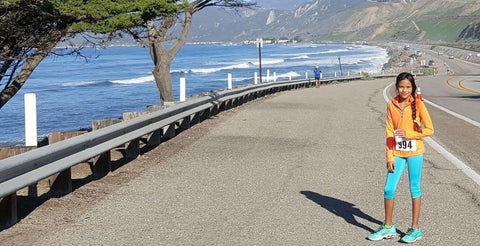On your next beach vacation, consider trading in your bathing suit and beach chair for sneakers and a running ensemble. For many of us, being on the beach is a rare opportunity, and we want to make sure to let our bodies reap the benefits. Running in the sand enhances your strength because you’re using a fuller range of motion and working muscles that don’t receive as much attention on harder surfaces.
Benefits of Beach Running
- Great for your joints – Strengthens the smaller muscles around the knees
- Full body workout – You’ll need to engage your abs, calves, glutes, arms, and shoulders more than usual
- Improves hard surface running – Sand running is more difficult and works additional muscle groups
- Low impact – You have more time to break the surface and recover
- Improved form – You have to work harder to control your body and movements. You can also check your footprint alignment in the sand.
- Better lower body workout – Your calves, thighs and glutes have to work harder to push through the soft surface
- Easy to vary – If you want variety in your run, you can easily move to different sections of sand (harder/softer) to change up the difficulty level
Hard Sand vs. Soft Sand
You’re out on the beach and ready for your first run in the sand when you notice that the texture of the sand varies depending on how close it is to the water. So where do you go? If you’re just starting out, we recommend running on the harder sand, which will be closer to the water from where the tide has come up and packed the sand together. This will be more similar to your typical running surfaces like asphalt.
If you’re hoping for more of a challenge and calorie-burner, head away from the water to the soft powdery sand. Powering through this sand will require you to exert more energy and engage more muscles both in your feet and throughout your entire body. It’s normal for your pace to slow down in this setting.
Shoes vs. No Shoes
Who doesn’t love the feeling of sand between their toes? When it comes to running in the sand, it’s best to wear your running shoes if you’re running on harder more compact sand. If you’re running in softer sand, you might want to start with shoes and then run barefoot in increasingly long increments, starting at 15 minutes. The muscles in your feet and your ankles need time to adapt to the new surface.
Safety Notes
To keep your beach running experience as fun as possible, you’ll want to take a few safety precautions. If you’re running barefoot, be on the lookout for glass or other sharp objects. Whether or not you’re barefoot, keep an eye out for beach toys, driftwood, or other objects that could trip you up. Just like any day out on the beach in the sun, we recommend that you lather up with sunscreen to avoid any sun damage.
Other than that, just enjoy yourself and your time at the beach!

